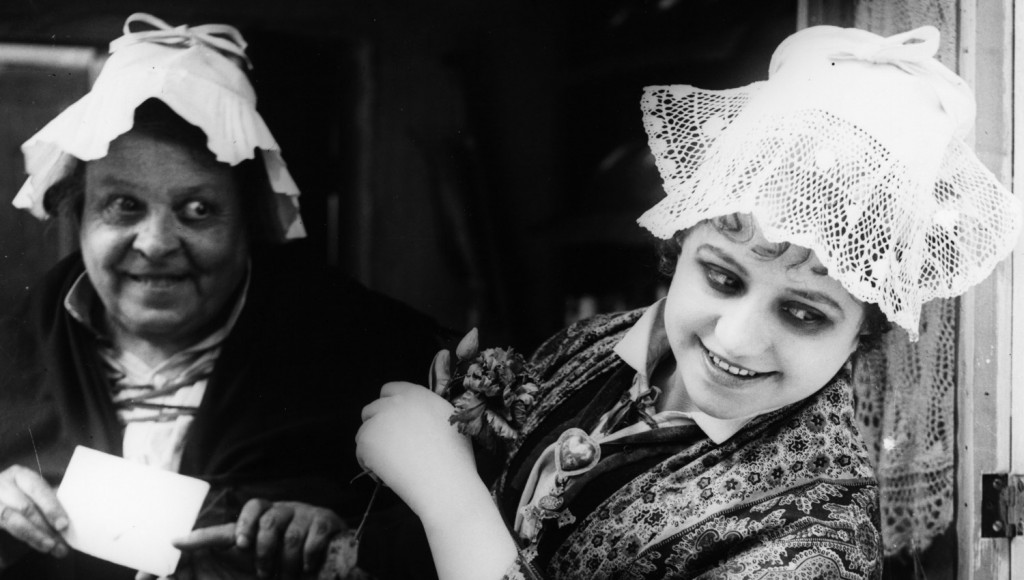Valentina Frascaroli protagonista

Programma a cura di Mariann Lewinsky
Curiosamente, i quattro grandi comici del muto italiano (nessuno di loro italiano!) si assomigliano molto, e persino a un esperto può capitare di confondere Henri Chapais alias André Deed (in arte Cretinetti o Boireau o Gribouille) con Ferdinand Guillaume (in arte Tontolini, poi Polidor), Raymond Frau (Krikri, poi Dandy) o Marcel Perez (Robinet).
È invece impossibile confondere le tre attrici italiane che facevano coppia fissa con loro. Nilde Baracchi, Lea Giunchi e Valentina Frascaroli sono così diverse, come lo sono un tulipano, un garofano e un mughetto: la Baracchi è una bruna imperiosa con un fisico da contadina intrepida, la bionda Lea una monella sempre pronta a spaccare tutto, e Valentina, la simpaticissima, graziosissima Valentina, è una gioia per gli occhi.
Valentina Frascaroli (1890-1955) viene scritturata dalla Itala nel 1909 e appare in seguito in numerose comiche di Cretinetti. Se lui è una maschera, altrettanto lo è lei, briosa Colombina del cinema, furba, maliziosa, sapiente e civetta. Ma più brava e più versatile del suo compagno, Valentina ha una doppia carriera: è attrice comica (con Deed e da sola, nella serie Gribouillette prodotta dalla Pathé) ed è jeune ingénue in drammi come Sacrificata! (1910), un notevole film delle origini, miracolosamente sopravissuto.
Sfogliando la stampa d’epoca si capisce che Valentina Frascaroli era un’attrice molto amata e apprezzata. Dei suoi circa cento film non è rimasto molto, ma quel poco che resta è fuori del comune: un frammento di L’emigrante (Febo Mari, 1915), la copia incompleta di Le memorie di una istitutrice (una Jane Eyre italiana, 1917) e soprattutto Il delitto della piccina, film politico del 1920 bloccato dalla censura, probabilmente mai distribuito e forse per questo rinvenuto in una copia nitrato d’epoca perfettamente integra. Singoli fotogrammi ritagliati permettono un’approssimativa ricostruzione del finale italiano perduto di Tigre reale (1916), dove la Frascaroli ha un ruolo di rilievo, mentre risulta quasi invisibile nella versione (d’esportazione) del film di cui disponiamo. Lo stesso vale purtroppo per la mini-serie di fantascienza nera Mado, concepita e girata da André Deed: la prima parte è andata perduta, la terza non è mai stata girata e nel frammento sopravvissuto Valentina, nei panni della cattivissima contessa Mado, è solo una fuggevole presenza. Vorrei tanto ritrovare Il documento umano (1920), prima puntata della trilogia, e quel che manca alla seconda, L’uomo meccanico (1921), incubo nato dalla prima guerra meccanizzata della storia.
Ringrazio Marco Grifo (delle Brigate Irma Vep) per il suo contributo alla filmografia di Valentina Frascaroli.
Mariann Lewinsky
Programma
Mercoledì 01/07/2015
10:15
Cinema Lumière - Sala Officinema/Mastroianni
Valentina invisibile: L’EMIGRANTE / L’UOMO MECCANICO
Valentina invisibile: L’EMIGRANTE / L’UOMO MECCANICO
Antonio Coppola
Mercoledì 01/07/2015
16:15
Cinema Lumière - Sala Officinema/Mastroianni
Valentina plurivalente
Valentina plurivalente
Mariann Lewinsky
Accompagnamento Maud Nelissen (piano), Frido ter Beek (sassofono) e Jasper Somsen (contrabbasso)
Giovedì 02/07/2015
10:15
Cinema Lumière - Sala Officinema/Mastroianni
TIGRE REALE
TIGRE REALE
Giovedì 02/07/2015
16:15
Cinema Lumière - Sala Officinema/Mastroianni
Valentina Frascaroli / 1
Valentina Frascaroli / 1
Antonio Coppola


